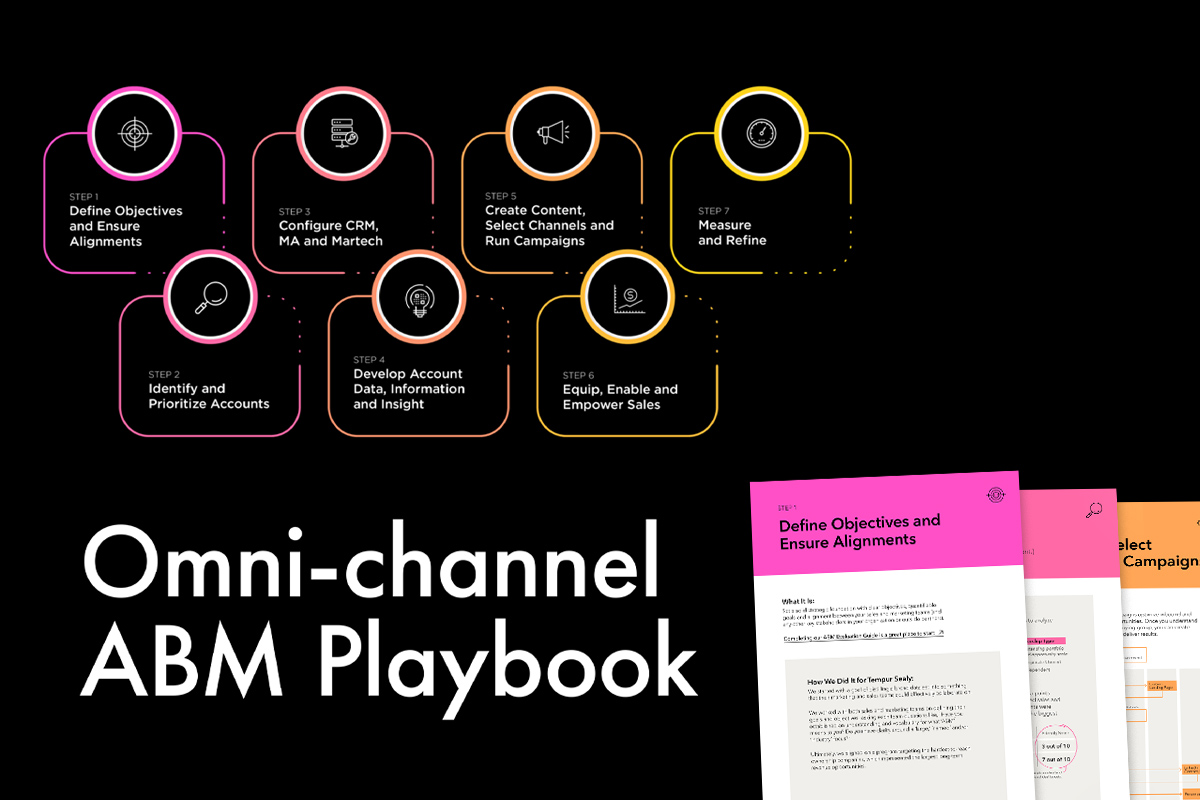Unlock B2B Growth with Account-Based Marketing: Your Practical Guide

Share this story
B2B organizations are increasingly investing in Account-Based Marketing (ABM) to drive revenue, improve customer experience and foster loyal customers.
ABM is reshaping B2B strategies, proving more effective than traditional demand marketing by focusing on personalized insights—and demanding new competencies.
This guide helps answer key questions about ABM implementation, to help you efficiently invest resources for maximum impact on your most valuable customer bases.
Is ABM Right for You? Strategic Fit and Alignment
Before diving in, assess if ABM aligns with your goals:
- Target Market: ABM excels when focusing on targets with shared challenges and a well-defined market.
- Personalization: Don’t limit ABM to just a few accounts. Hyper-personalize campaigns for specific customer segmentations to maximize relevance.
- Complex Sales Cycle: ABM helps navigate intricate buying ecosystems with multiple decision-makers.
- Sales and Marketing Alignment: ABM demands strong collaboration between sales and marketing teams.
- Goals: Align your ABM program using clear objectives:
- Drive revenue generation by increasing deal size and accelerating sales cycles.
- Boost customer lifetime value through account expansion and loyalty.
- Cultivate brand advocacy by building strong relationships.
- Budget Allocation: Determine the appropriate budget percentage based on program scope, technology needs, content development and sales enablement resources.
Measuring Success: ROI and Key Performance Indicators (KPIs)
ABM is a long-term play. Therefore, manage expectations accordingly. Don’t solely focus on immediate revenue; consider building awareness and engagement.
Key metrics to track include:
- Engagement: Website visits, content downloads, and email interactions.
- Pipeline Growth: Number and value of opportunities generated.
- Account Penetration: Increased contacts and engagement within target accounts.
- Sales Cycle Velocity: Time from initial contact to closing deals.
- Customer Retention Rates: Renewal, upsell and cross-sell rates.
Allow sufficient time for ABM strategies to yield results, potentially running campaigns for the length of your typical sales cycle, or even double that time for broader targets. Continuously refine your approach using data and insights.
Operationalizing ABM: Identifying, Prioritizing and Aligning
Effective ABM requires careful operational planning:
- Target Account Selection:
- Define your ideal customer profile (ICP) based on firmographics, industry and revenue.
- Use internal data (CRM, sales history) and external data (industry reports) to identify high-potential accounts
- Segment accounts by potential and likelihood to convert for tailored messaging.
- Technology and Data:
- Implement a CRM system for managing account data and tracking interactions.
- Integrate your marketing automation platform for personalized campaigns and qualifying leads.
- Use data enrichment and predictive analytics tools to improve targeting.
- Consider personalization platforms for customized website and content customer experience.
- Sales and Marketing Alignment:
- Establish shared goals and metrics.
- Schedule regular meetings and create shared dashboards to facilitate communication.
- Develop a Service Level Agreement (SLA) to define roles and responsibilities.
- Provide joint training to equip both teams with the necessary skills.
Need a proven process for ABM planning? We wrote the playbook.
Content and Sales Enablement: Delivering Value
Resonate with target accounts through tailored content and effective sales tools.
- Content Creation:
- Address specific pain points and challenges with personalized content.
- Offer valuable insights and industry-relevant research to position your brand as a thought leader.
- Utilize various formats like case studies, webinars and personalized landing pages.
- Channel Selection:
- Integrate digital and traditional channels.
- Use targeted advertising and personalized email campaigns.
- Engage key decision-makers on LinkedIn with thought leadership content.
- Host exclusive events tailored to target accounts.
- Sales Enablement:
- Equip sales reps with account-specific playbooks.
- Provide tools for customizing presentations and proposals.
- Offer training on ABM principles and personalized communication.
By focusing on these practical questions, you can create a successful ABM strategy that maximizes your resources, builds trust and retention rates, and drives profitable growth with customers engaged.



